Economy and military are two pillars of most games within the RTS genre: you gather resources in order to produce an army of some kind, then use that army to win the game. Whether it’s made up of Zerglings, Grizzly Battle Tanks, Footmen, or Fire Lances – the overall concept is basically the same. Units cost resources, so more resources gathered = bigger army.
Rise of Nations in particular seems to especially focus on the importance of a strong economy, so this series will go over how to get one.
A previous version of this article incorrectly stated that a Woodcutter’s Camp gave a +25 Timer completion bonus, when the bonus is actually +5 per worker-slot. This error has since been fixed. The same error was also present for the Mine completion bonus, which is also +5 per worker-slot, rather than a flat 30.
Rise of Nations Resources 101
First things first: let’s cover the basics – particularly for people new to a game where there are six unique basic resources when basically every other RTS game has one or two.
Much of what’s covered here can be discovered by playing the game and taking the time to read the tooltips, but since this basic information is the foundation upon which more advanced concepts are built on, it’s important to have a firm grasp of it. I myself learnt a few things while going through the process of writing this article, so while veteran players will know most of this basic section already, there may be a thing or two which you weren’t aware of – and it’s never a bad thing to better understand the basics either way.
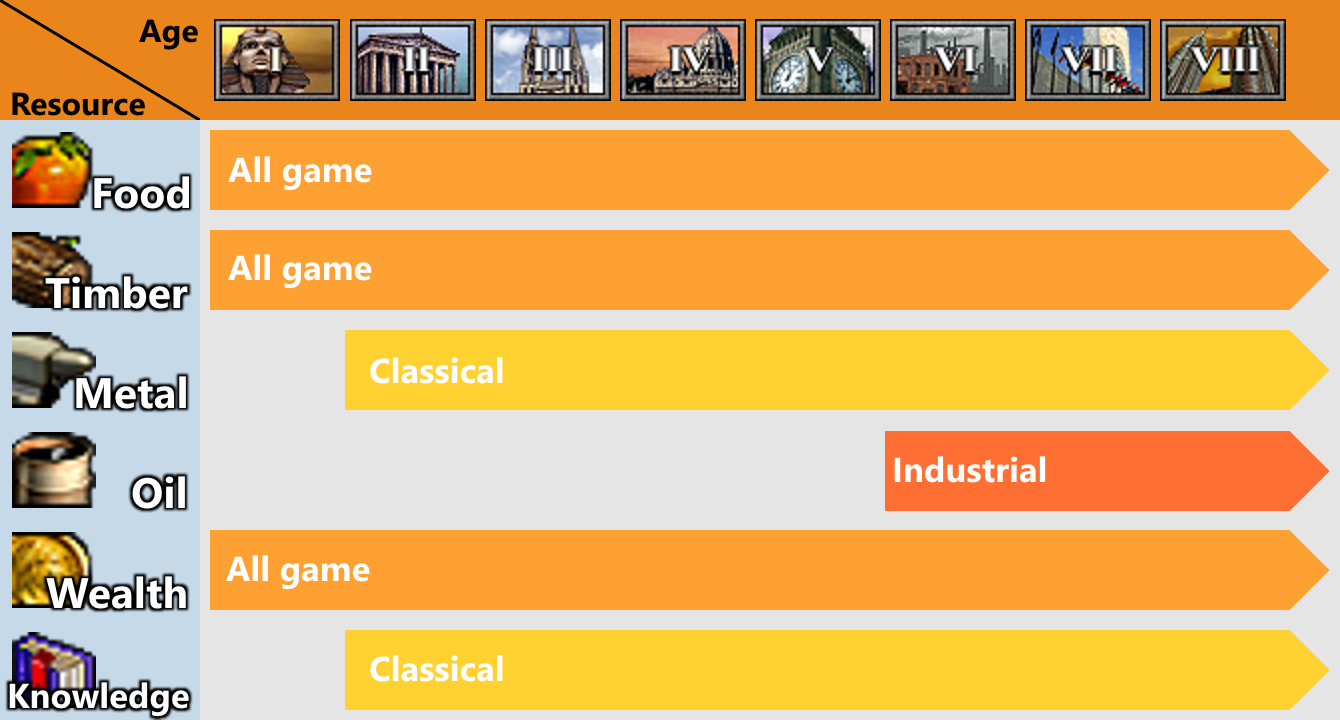
Food, Timber, and Wealth are unlocked right from the get go, and continue to be used for the entirety of the game. Metal and Knowledge are unlocked in the Classical Age (II), and Oil comes much later on once you get to the Industrial Age (VI).
The order of the resources here might seem a bit odd to those less familiar with the game – surely it would make more sense to have ordered the resources chronologically, with Wealth in the third spot instead of Metal, and Knowledge directly beneath it? However, the order presented is the same way that the resources are shown in the game, with resources roughly ordered by their “complexity”.
Food
Food is the most basic and fundamental resource, allowing you to produce Citizens in order to gather resources, build buildings, and essentially just have a functioning empire. The more “basic” military units also generally cost some Food to produce, for example Light Infantry and Light Cavalry. Civic (blue) technology at the Library requires a moderate amount of Food to research, as do Age advances (orange library tech).
Food is produced at Farms, of which each city can have a maximum of five. They are the only resource-gathering building with a per-city cap. Farms require only Timber to be built, and must be placed within a city’s economic radius (more on that term later).
Once a Farm has been completed, you receive a once-off bonus of 20 Food. In order to produce its +10 Food income, each farm requires one citizen to work it after it’s constructed, otherwise it produces 0 Food income until manned.
On sea maps, Fishermen (produced at the Dock) can also utilise Fish for Food income, but we’ll return to the subject of Fish later.
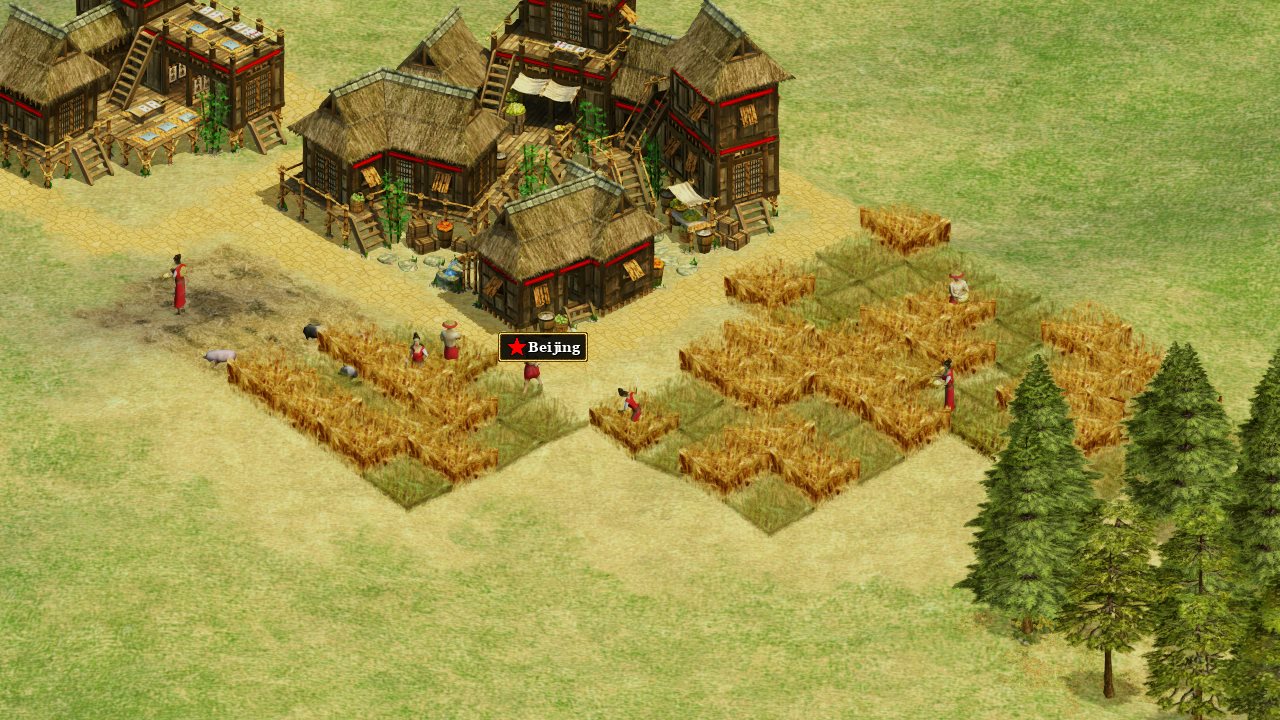
Timber
Timber (or colloquially just Wood) is required in the construction of most structures, particularly those lower in the tech tree. Farms, Libraries, Barracks, and Markets are all examples of buildings that require Timber to create. Commerce (green) technology at the Library also requires a moderate amount of Timber to research.
Timber is produced at Woodcutter’s Camps, which must be placed near trees. Woodcutter’s Camps require only Food to be built, and provide a once-off bonus of 5 Timber per worker-slot upon completion (meaning denser camps with more trees provider a higher bonus).1
Much like with Farms, a Woodcutter’s Camp must be manned by Citizens or else it will not produce any Timber income. Each Citizen working at a Woodcutter’s Camp produces +10 Timber income, and the maximum number of Citizens that can work at any one Woodcutter’s Camp is determined by the number of trees close to its location.
Unlike some other RTS games where trees are literally chopped down and their wood collected by workers, trees in Rise of Nations are not chopped down, and can instead provide wood over the whole duration of a game.
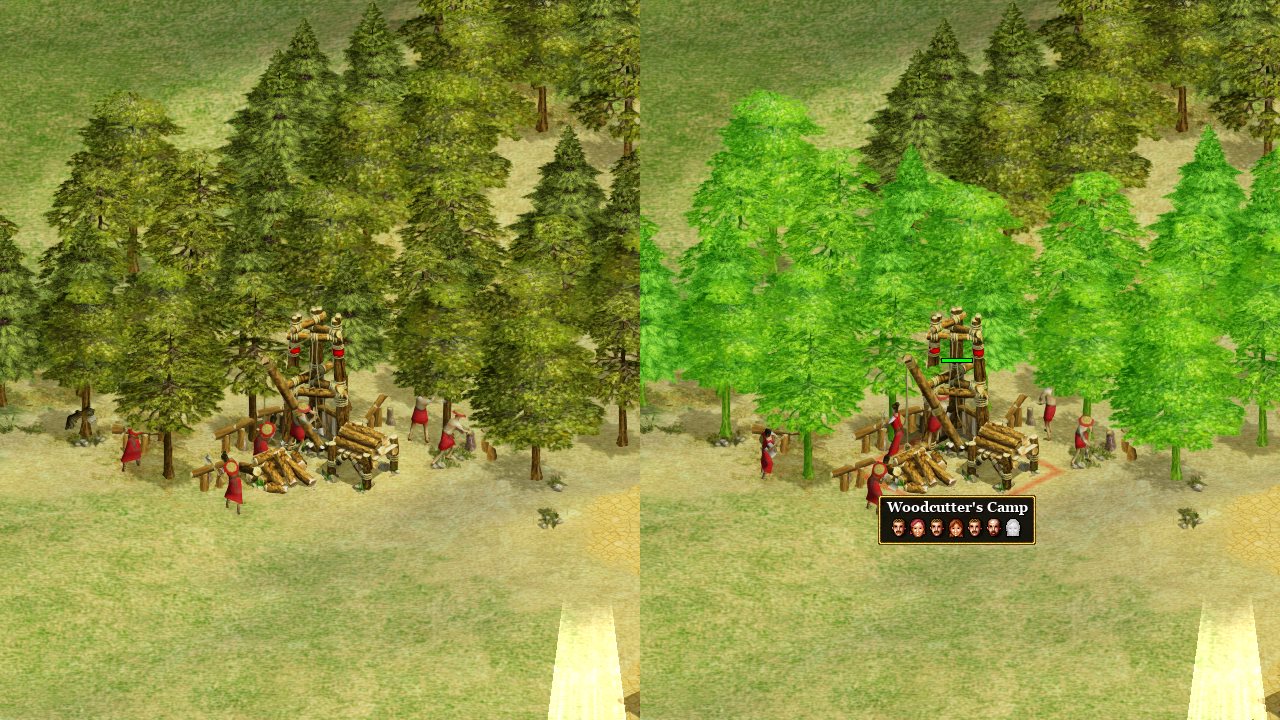
Metal
Metal is used in most armored or “heavy” units and structures. Examples include Heavy Infantry, Heavy Cavalry, Towers, Forts, as well as some of the more specialised military units that don’t directly participate in combat such as Scouts, Spies, and Generals. Military (red) technology at the Library usually requires a moderate amount of Metal to research.
Metal is produced at Mines, which function similarly to Woodcutter’s Camps. They require only Timber to create, and must be placed next to a mountain. Upon completion, you will receive a once-off bonus of 5 Metal for every worker slot, much like the Woodcutter’s Camp.
Note that both metal and Mines only become available in the Classical Age onwards, and will therefore not be available at the start of games with the default ruleset.
Each Citizen working at a Mine produces +10 Metal income, but the structure itself does not produce anything if not manned. The maximum number of Citizens that work at a Mine is determined by the size of the Mountain at which it’s placed, with a maximum cap of 10 workers.
Much like with Timber production, mountains do not lose mass if actively mined in Rise of Nations – they are bottomless pits (or rather endless mounds) of generic metallic material, ready and waiting for use by your empire.

Oil
Oil is an interesting one, since it’s the only harvestable resource where you don’t actually get to see the resource itself until you’ve reached the required age to unlock it (VI). In any case, it’s used for most vehicles once you transition away from horses in the later ages, as well as for producing new late-game units such as missiles and aircraft.
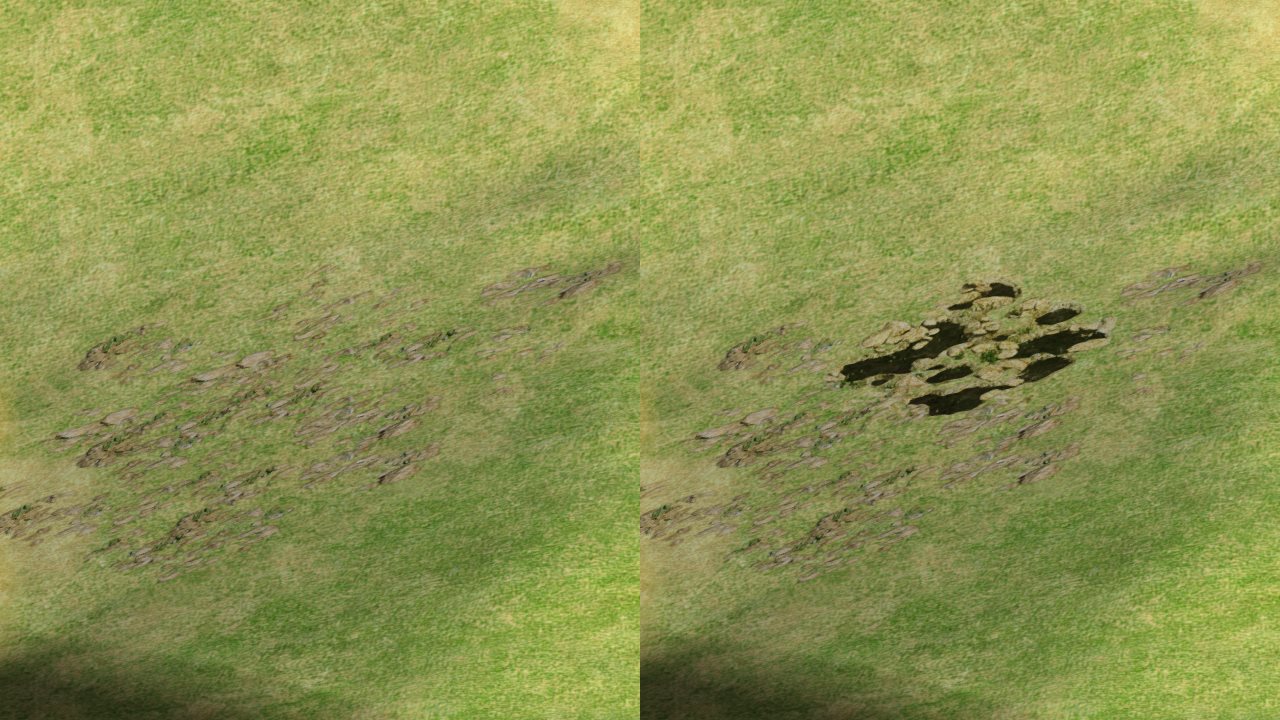
On land, Oil spawns exclusively on Rocks (see above), a type of terrain which you’re not allowed to build anything on except if collecting Oil. Rocks are not guaranteed to have Oil on them, but Oil will not be found on land except on a patch of Rocks. Oil can also sometimes be found in water (not rivers, but actual have-to-use-a-boat water) similarly to Fish.
Oil is collected by building an Oil Well/Platform on top of a patch of Oil and then keeping a Citizen working at the Oil Well/Platform, just like with a Farm. Oil Wells/Platforms that are not manned will not produce any Oil, but while manned will generate +35 Oil income. They cost a combination of Timber and Metal to construct, and provide a once-off bonus of 50 Oil upon completion. Only one Citizen can operate each Oil Well/Platform.
As an aside, Rocks do have a minor use pre-Industrial Age beyond getting in the way: Light Infantry on Rocks take 33% reduced damage, making them somewhat favorable locations to fight on with those units.

Wealth
If Metal and Oil were where the six resources began to diverge into more specialised units and buildings, Wealth is where things reach a “vaguely optional” level of divergence. Wealth is used for units and buildings that could be considered “more advanced”, especially when compared to other more “basic” units. Examples include Archers (compared to to Light Infantry), Ranged Cavalry, as well as both aircraft and anti-aircraft units once you have the required technology to produce them. Science (yellow) technology at the Library requires a moderate amount of Wealth to research.
Unlike with the previous four resources, Wealth is not produced by Citizens. Instead, you primarily generate Wealth using Caravans built from the Market, as well as Taxation research at the Temple. Each Market built also passively produces +10 Wealth income with no additional input, although this is generally a less efficient way to increase Wealth income compared to the alternatives.
Completing a Market, Temple, or Dock produces a once-off completion bonus of 30 Wealth, and each of these three buildings requires only Timber to construct.
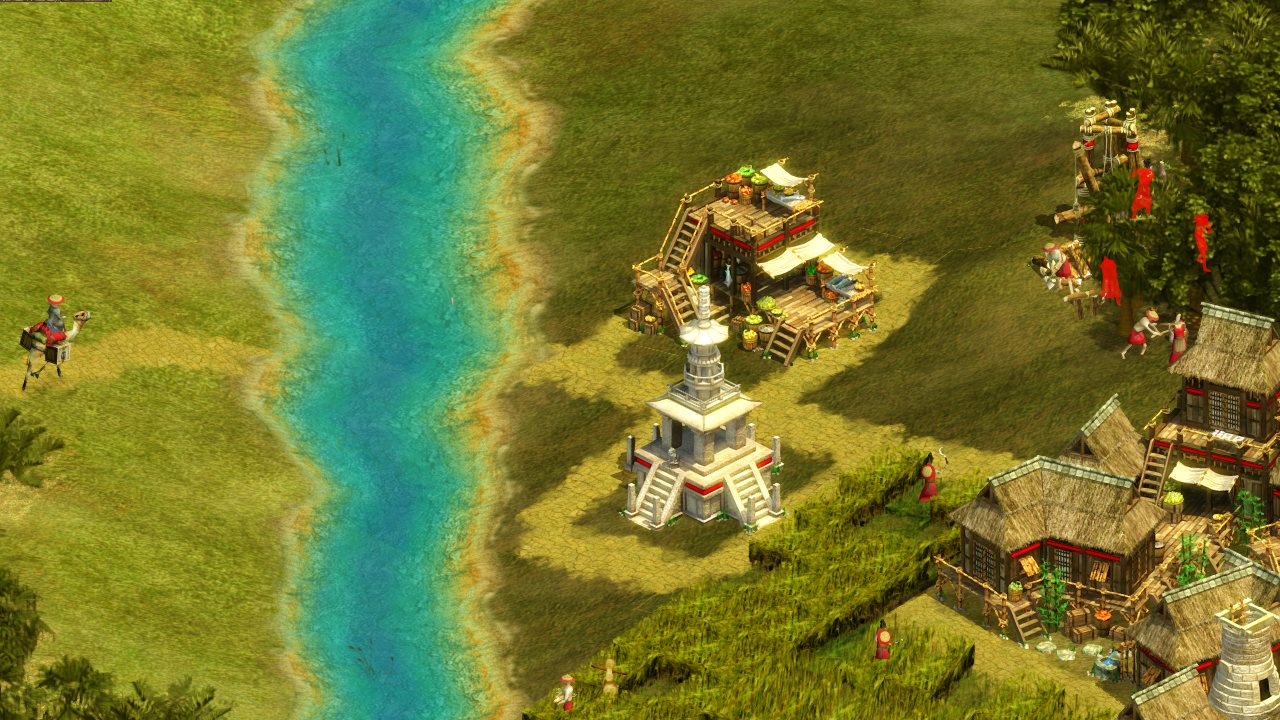
Caravans form trade routes between any two of your cities, where they’ll move from one city to the other and then repeat the process indefinitely while generating a slow trickle of Wealth. The amount of Wealth generated by Caravans depends on a few different factors, but Caravans will automatically use the most profitable routes available without any manual input, so you don’t strictly have to know the details (although, I have previously outlined exactly how Caravans work if you’d like to find out).
The most important thing to know is that you get a once-off bonus (twice, so actually a “twice-off” bonus I suppose) when initially setting up a trade route, and then afterwards you will gain passive income from each Caravan. For example, a Caravan might provide a +20 Wealth bonus, a +20 Wealth bonus, then a constant +25 Wealth income after that.
The bonus occurs when the Caravan reaches the second City on its trade route for the first time, and then again when it reaches the first City on its trade route for the second time (the halfway and full-way points of the trade route journey).
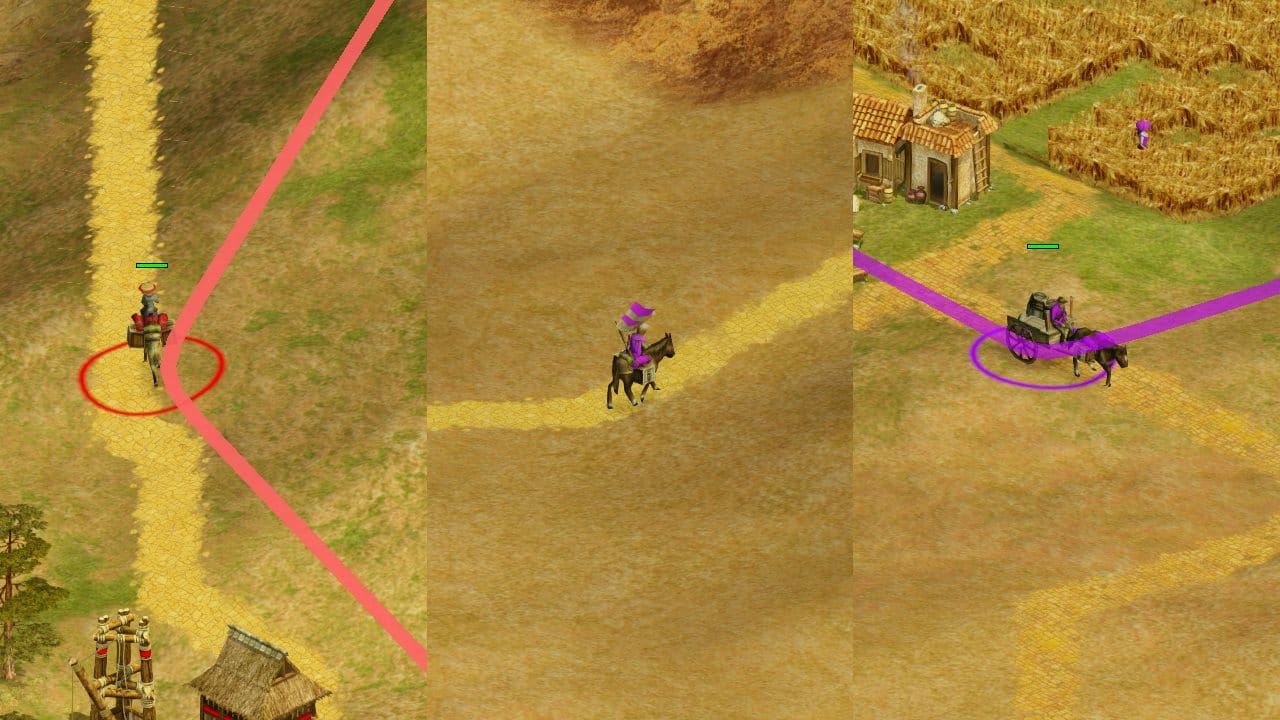
Taxation provides passive Wealth income based on the level of the Taxation technology you’ve researched and the amount of territory which you control. More of either means more Wealth income, and the exact formula is +0.5 / +1 / +2 / +3 Wealth (based on which level of Taxation technology you have researched) per 1% of territory controlled. You don’t get any Taxation income by default (i.e. it begins at +0 Wealth with no technology researched).
This means that with Taxation researched your Wealth income increases as you gain more territory, offering a small additional benefit to pushing out your borders. It should be noted however, that the initial Wealth income for Taxation is generally quite low, so early in the game it’s not efficient to expand purely for the sake of furthering your Taxation income.
Both Taxation research and Caravans cost a combination of Food and Timber.
One other way to get Wealth is via The market – which is confusing because I don’t mean a Market — as in the building — I mean The market. The market is unlocked once you have Commerce (green library tech) level 2 and at least one Market (the building).
The market allows you to buy and sell resources to an imaginary off-screen entity. Resources bought and sold on the market do not come from or go to another player in the game.2 It should be noted however, that the buy and sell prices apply to all players, which allows for some interesting interactions.
- Each time a resource is bought, the buy/sell price of that resource increases for everyone.
- Each time a resource is sold, the buy/sell price of that resource decreases for everyone.
Speaking of those prices, the Buy price will always be higher than the Sell price.3 Resources are bought and sold in Wealth, so you can’t really “buy” Wealth, simply sell other resources in order to obtain it. There is some amount of normal, constant fluctuation in the prices regardless of the actions of either yourself or other players, and prices always normalise over time. If someone in the game buys a year’s supply of Timber and the price skyrockets to 250, it will slowly go down back to something closer to the 100 mark.4
There are two ways to access the market. The first is to click on.. a Market, and you’ll see buttons for buying and selling various resources on the bottom left of your screen. The faster way is by opening up a panel on the top left of the screen and using this panel to buy and sell instead (the two methods do the same thing).5
The two methods of interaction are shown in the bottom-right panel in the below meme image macro6 with the top left panel in the.. top left, and the bottom-left market interface shown in the bottom 2/3 or so.
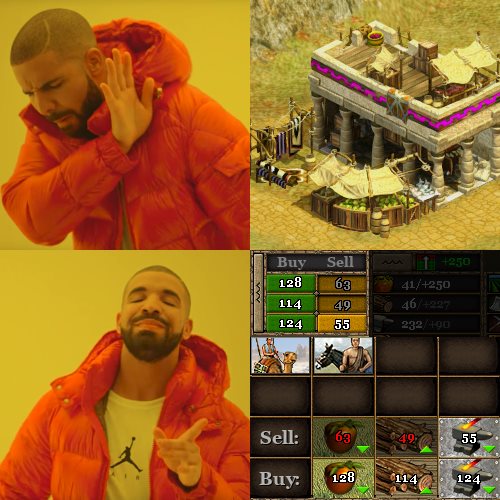
Knowledge
The sixth and least “normal” basic resource is Knowledge. While vitally important to a nation, it is used for the least number of unique things.
The primary use for knowledge is Library research – almost all Library research from the Classical Age (II) onwards costs a combination of Knowledge and one of the other basic resources. Late into the game Knowledge is also required to create both conventional and nuclear missiles. The final two Wonders in the game — the Super Collider and Space Program — are the only buildings that require knowledge to construct (in addition to other resources).
To get Knowledge you first have to reach the Classical Age (II). Until then Knowledge cannot be collected by any means,7 and any research usually requiring Knowledge will instead have a different resource substituted in its place (at an inefficient ratio).
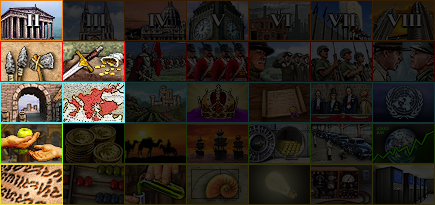
The primary source of Knowledge is Universities, which provide a passive income of +10 Knowledge (similar to how a Market provides +10 Wealth income). At each University you can train up to a maximum of seven scholars, each of whom will add another +5 Knowledge income. Unlike with virtually all other manned resource production, Scholars are explicitly garrisoned within the University – they cannot be injured or killed unless the University is destroyed or they are ejected from the building.89 This makes them more difficult to raid relative to other resource production.
Universities require Timber and Wealth to be constructed, and Scholars require exclusively Wealth to create – although upgrades to Scholars require exclusively Timber. For the most part, this means that your Knowledge income is mostly gated by Wealth, particularly in the early game.
This can make investment into too much Knowledge production particularly risky compared to other economic production. Unlike other resources, Knowledge cannot be used for training military units, but also cannot be bought or sold on the market. This means that should you come under attack, there is no way to convert your resource investment into military production other than using your Scholars as rather expensive (and likely ineffective) cannon fodder.

Closing Words
That wraps up the six basic resources. While writing this article I also discovered that the third chapter (which also covers RoN’s economy) of the Sybex Official Strategies and Secrets is actually available online, so you may find that interesting to peruse. Although it is in my opinion a little less information-dense than modern sources, it can still be fun to read through a guide like that.
Over the coming weeks and months I’ll be continuing this series by covering other aspects of the economy in Rise of Nations. Be sure to check those articles out if you’re interested in reading more – in the meantime I’ve previously published other RoN-related articles which you may enjoy reading while I work on the next ones.
Other articles in this series:
- Part 2: General Game Concepts
- Part 3: Fish and Rare Resources
- Part 4: Enhancement / Amplifier Buildings
- Supplementary: Demystifying Caravans
- There’s a little bit of conflict about whether the bonus is +5 per or just a flat +25. This wiki page said a flat 25 (until I edited it) and I previously made a note based on tests that it did appear to be a flat +25. However upon-retesting in both standard and nomad rulesets — as well as watching replays and other people’s recordings — I’ve observed +5 per instead. I’m unclear why both (previously) myself and the wiki thought it was +25.
- Although if Diplomacy is enabled, you can separately send and receive resources from other players.
- The Imaginary Off-Screen Entity likes to make a profit, it seems.
- If you see one resource spike — especially if it stays high for a prolonged period of time — it can provide some insight into what another player might be doing, especially in 1v1 games. Either the other player is struggling to produce that resource, or they’re simply using an unusually high amount of it – potentially spamming one or two types of units.
- I personally leave this buy/sell panel active while I play for easy access and monitoring. You may also find the other linked panels to be quite helpful to have open.
- One of my friends can be extremely particular about calling it an image macro and not a meme. Regardless of what I call it, I do wonder if using one has cheapened the article.
- With the single exception of the unique nation powers for the Greeks.
- Although they can be forcefully ejected by Flamethrowers. Amusingly, upon being forcefully ejected Scholars will fake their deaths using flaming, screaming decoy corpses. Despite these “bodies”, Scholars appear to not be harmed when forcefully ejected. Maybe it’s for balance reasons that they’re treated differently to other units when fire is involved. https://gfycat.com/UnsightlyIdealisticGarpike
- I was disappointed to discover that Fire ships could damage Universities without ejecting Scholars, despite the fact that they can force ejections from Docks if used similarly. https://youtu.be/8bny5lQ8U1k
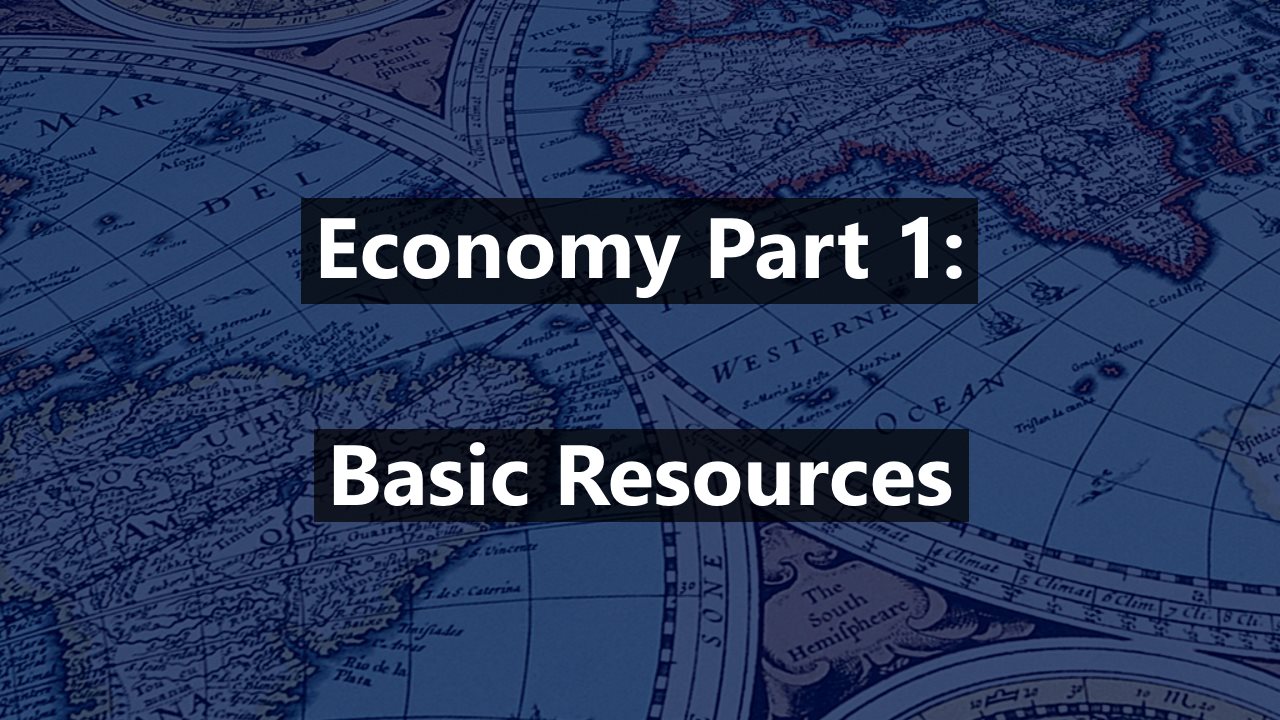
Thanks for the info! Certainly there where things I didn’t know